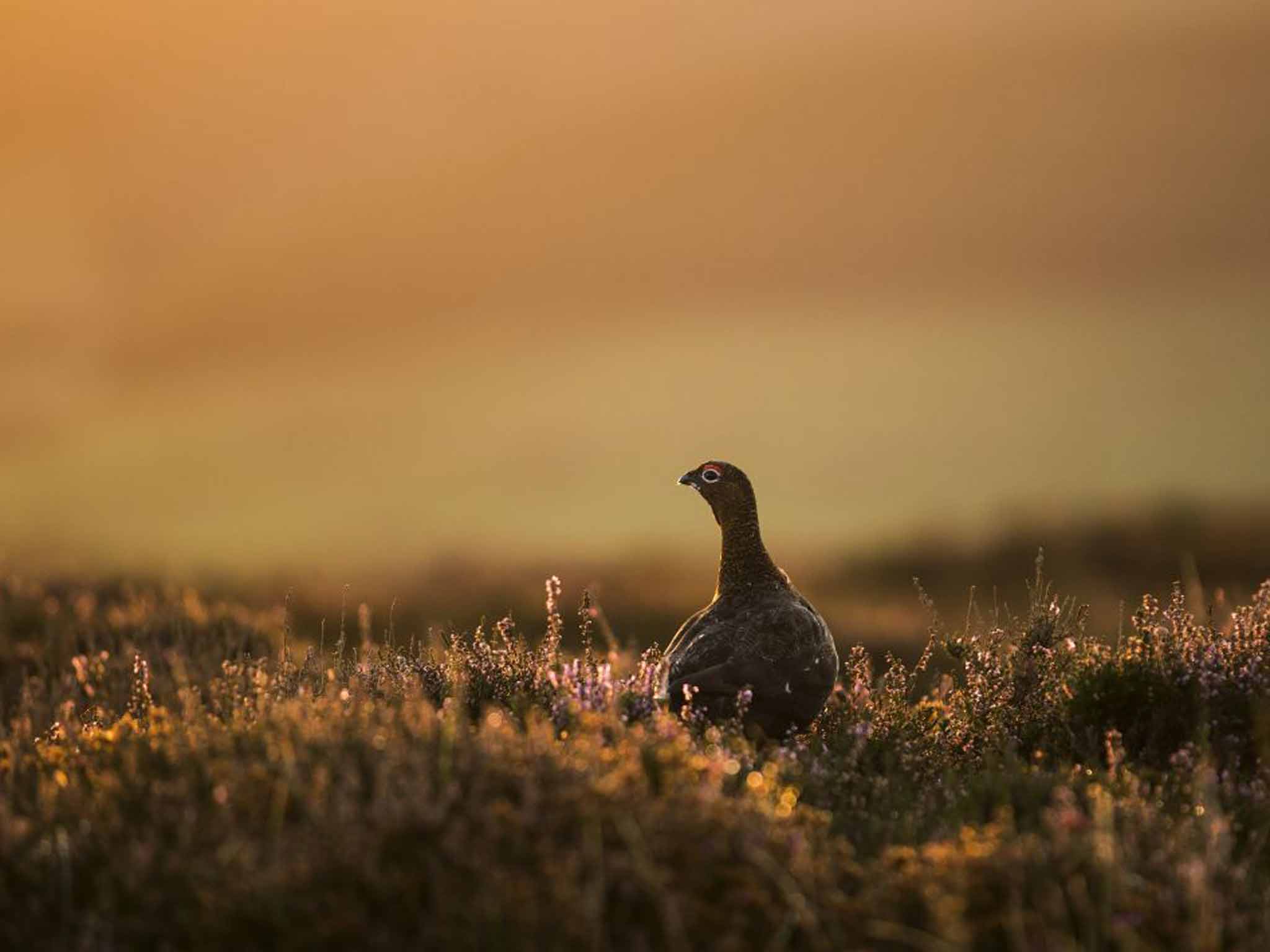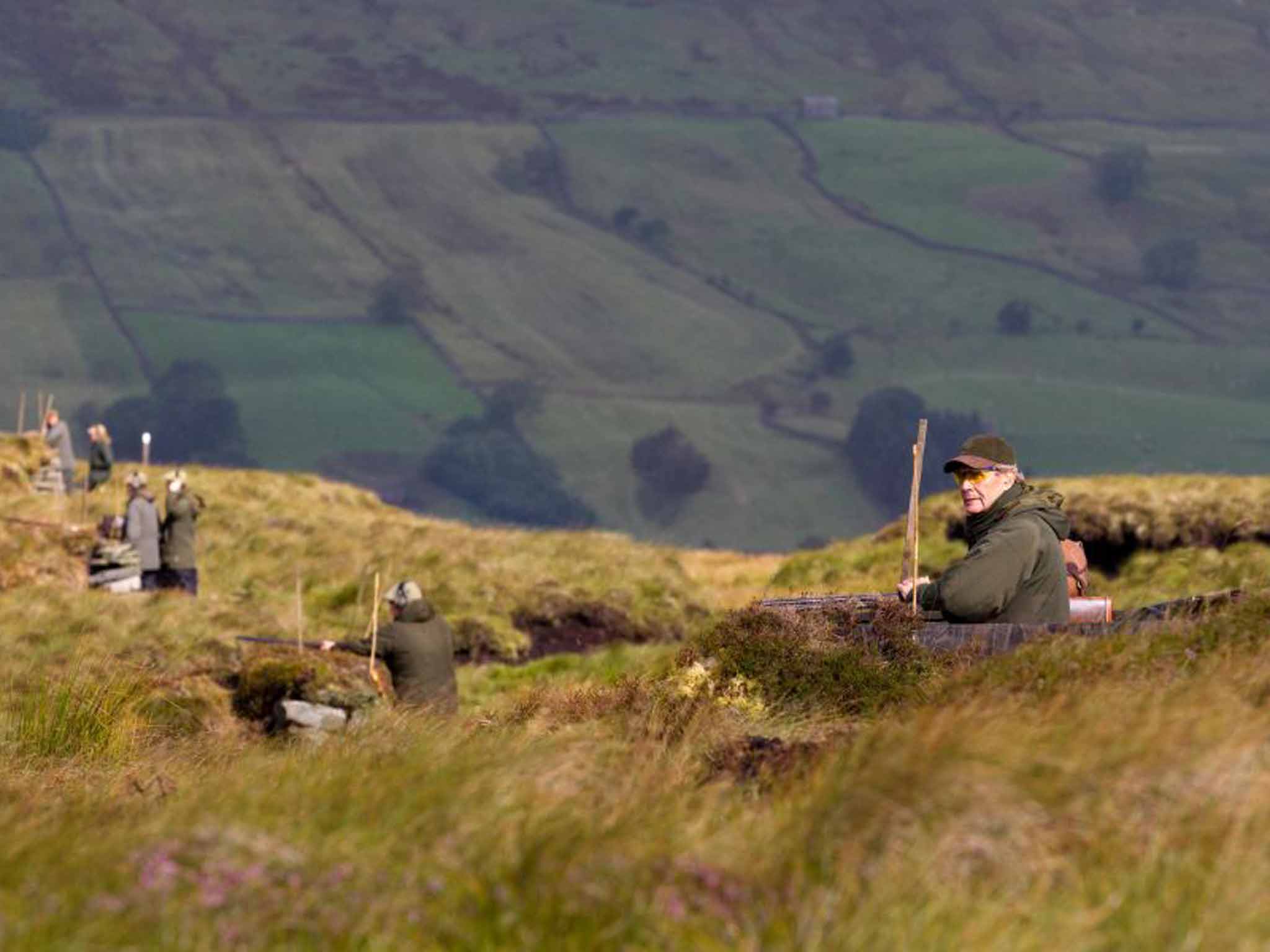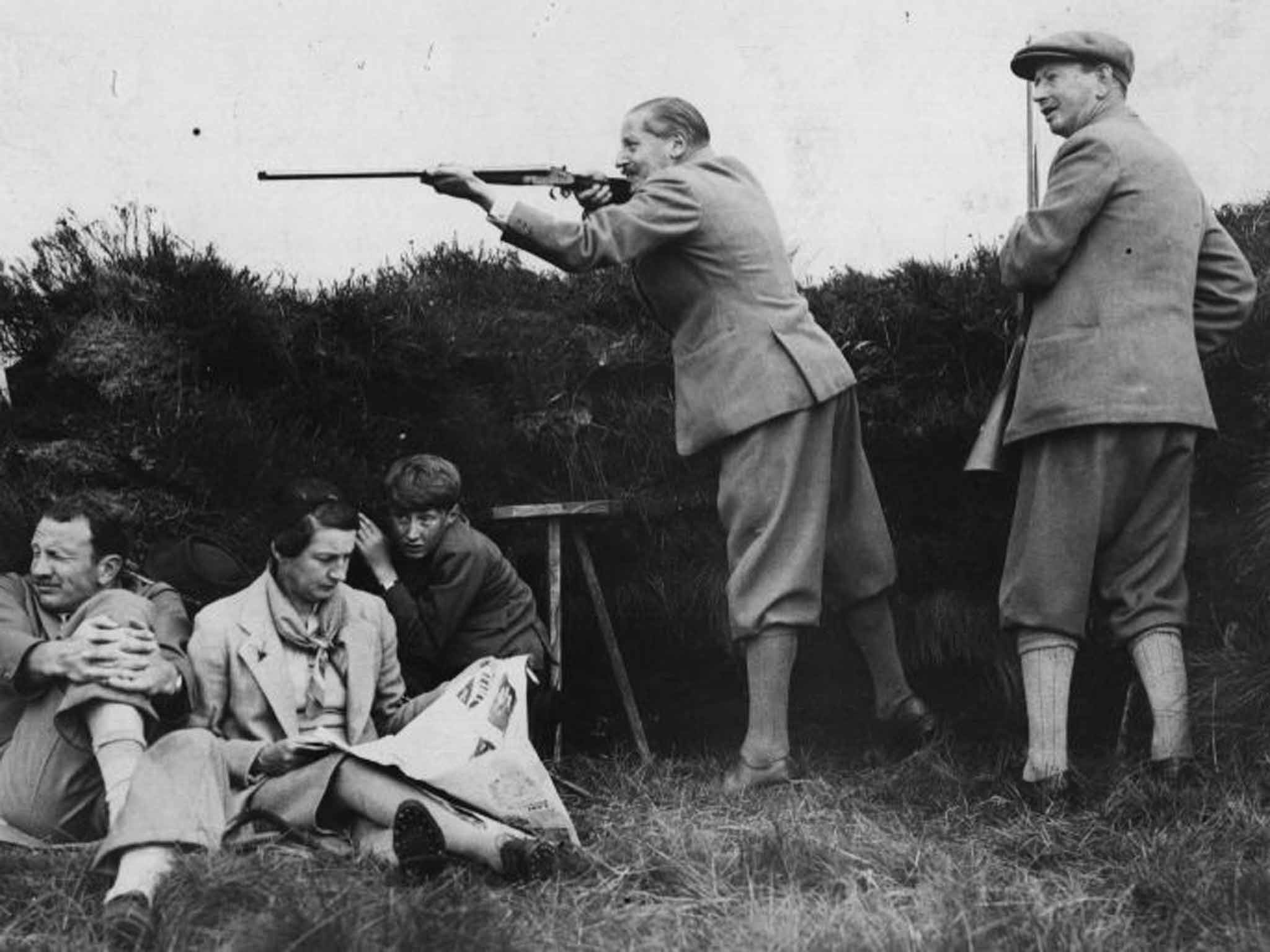Not such a Glorious Twelfth: Should driven grouse-shooting be banned?
The season for red grouse-shooting is about to begin. But its driven form, where beaters flush birds towards the guns, is having a terrible impact on the environment and on other birdlife, to the cost of every nature-lover and taxpayer. Mark Avery, former conservation director of the RSPB, explains why this most unsporting sport should be banned

Your support helps us to tell the story
From reproductive rights to climate change to Big Tech, The Independent is on the ground when the story is developing. Whether it's investigating the financials of Elon Musk's pro-Trump PAC or producing our latest documentary, 'The A Word', which shines a light on the American women fighting for reproductive rights, we know how important it is to parse out the facts from the messaging.
At such a critical moment in US history, we need reporters on the ground. Your donation allows us to keep sending journalists to speak to both sides of the story.
The Independent is trusted by Americans across the entire political spectrum. And unlike many other quality news outlets, we choose not to lock Americans out of our reporting and analysis with paywalls. We believe quality journalism should be available to everyone, paid for by those who can afford it.
Your support makes all the difference.With the imminent opening of the red grouse shooting season on the "Glorious Twelfth" of August we are likely to hear the usual voices saying that this peculiarly British activity is a traditional field sport. Yet, generally, it isn't very traditional and it isn't very sporting. Driven grouse shooting is coming under increasing scrutiny from both an economic and ecological point of view and from both policy makers and the general public. So how long can it continue?
The wild red grouse lives in the heather-clad hills of the British uplands – it is the UK variety of a species also known as the willow grouse or willow ptarmigan which lives in Scandinavia, Russia, Canada and the USA. It's a hardy bird which lives in the hills all year round and in the UK eats a diet predominantly of heather shoots. This is the bird that adorns the label of Famous Grouse whisky and features in amusing television adverts in the run-up to Christmas.
In many parts of the world grouse are hunted – they represent sizeable packages of protein – and predominantly this hunting consists of walking across the hills and shooting at grouse that are flushed by your presence as they fly away. This form of shooting, walked-up shooting, often with trained dogs, pointers or setters, was the main way that grouse were shot until the invention of the breech-loading shotgun made reloading your firearm much easier, and bigger "bags" of grouse more feasible. Instead of going to the grouse in walked-up shooting, driven shooting requires the men with the guns to wait in a line of small shelters, called butts, for a distant line of "beaters" to walk across the moorland and flush the grouse towards them.
Those who oppose all field sports, in whose number I do not include myself, say that driven grouse shooting would only be sporting if the grouse were armed, too. However, a look back in time shows that this form of the sport wasn't favoured by many keen adherents of field sports in its early years.
Traditionalists decried the unsporting nature of driven shooting, where the shooter was not remotely a hunter of grouse but a mere recipient of a mass of live targets provided by the sweat and activity of the beaters. Instead of the ability to walk over rough terrain, read the ground, train your dogs and then work with them to find and shoot down a few grouse in a day – maybe 20 birds but often many fewer for a day's exercise in the hills – driven grouse shooting allowed someone who was merely a good shot, but who lacked the broader skills of understanding the habitat, to kill many more birds.

Driven grouse shooting probably developed independently on several estates, but Sir Walter Spencer-Stanhope, who owned moors in the Yorkshire part of the Peak District, is generally regarded as the first or an early adopter. He wrote that there were frequent criticisms of the practice in the newspapers of the time until the Dukes of Devonshire and Rutland also began driven grouse shooting. And when Queen Victoria and Prince Albert bought Balmoral as a shooting estate, the popularity of driven grouse shooting was assured.
Driven grouse shooting, at great expense, is now seen as the norm, and the activity has so much snob-value attached to it that it is now become the thing to do, and to be seen to be doing, among many of the moneyed classes. There are landowners who still prefer a day or two's walked-up shooting each season – but, when they can sell a day's driven grouse shooting for upwards of £30,000 to a party of six to eight "guns", it's not really a luxury they can afford to indulge.
Those who do it describe driven grouse shooting as one of the greatest thrills available. As the grouse fly over the butts they are like arrows streaking through the sky, flying at high speed and capable of changing direction in an instant. There are birds everywhere, the sound of gunfire from other butts is exhilarating, and to down each bird requires some skill. It's a few minutes of hectic activity, with the loaders and shooters working in harmony and then there is the calm after the storm when the dead grouse are retrieved, any injured birds dispatched and the totals are counted for that drive. Driven grouse shooting is said to be at its most exciting when the birds come thick and fast – and at the end of such a drive the body count can be enormous.
In Victorian times, the bags were sometimes spectacular. A party of six guns shot more than 2,000 red grouse on Wemmergill Moor in Yorkshire on 20 August 1872, with the first shot fired at 8.20am and the last around 12 hours later. Sir Frederick Milbank was responsible for a good third of these birds himself. On 30 August 1888, Lord Walsingham had a remarkable day when he killed 1,070 grouse on Blubberhouses Moor in Yorkshire (at a kill-rate of 70 per cent kills to shots). He was the only shooter, using three guns and two loaders, and was further assisted by 40 beaters in two teams. They all got off to an early start at 5.12am, with the first of 20 drives of the moor, the last of which finished at 6.45pm. The most successful drive was the 16th of the day, when his lordship shot 94 grouse in 21 minutes – that's one every 13 seconds – and there was no sign that he was tiring physically of the effort, nor emotionally at the level of killing. In fact, the last 14 kills were made on his walk home.
Abbeystead in Lancashire, now owned by the Duke of Westminster, still holds the record for the biggest grouse bag in a day – 2,929 birds, by eight guns, on 12 August 1915. And if the slaughter is now more modest – with most dead birds genuinely reaching the dining tables of hotels and restaurants, unlike the poor pheasants that sometimes end up as landfill – such large bags of birds are still only possible through intensive land management.

Red grouse are not reared and released like many pheasants and partridge, but their hills are managed by teams of gamekeepers to maximise the number of birds available at the beginning of the shooting season. The heather is burned, on a rotation of perhaps a dozen years, in order to create a patchwork of old heather (good for shelter and nesting) and young heather (better to eat), wet areas are drained (as heather doesn't do well in sodden soils) and natural predators are killed both legally (foxes, crows, stoats, etc) and too often, illegally (hen harriers, golden eagles, peregrine falcons, etc). The high densities of red grouse may make them more prone to disease, particularly from parasitic worms, and piles of medicated grit are left on the moors, every few hundred yards, for the birds to peck at to reduce such losses. By late July each shooting estate will have counted their grouse and know whether it is a good year or not, and will be planning their shooting days between 12 August and 10 December.
That, then, is the history of driven grouse shooting, an activity practiced by the rich and traditional in our hills for about 150 years. But now it is seeing something of a resurgence, with the widespread use of medicated grit reducing losses to disease and a supply of foreign hunters and moneyed City gents wanting to try their hand at it. It's not how I would want to spend a day, and I don't have the money to contemplate it; still, in the big scheme of things, we could write it off as a bizarre British pastime practiced by a few men in tweed up in the hills. However, it's too much of a menace for that – and grouse shooting is under increasing pressure.
I first got involved in the debate over grouse shooting many years ago, when I worked for the RSPB. The illegal persecution of birds of prey on some shooting estates is a serious conservation problem in the UK. The hen harrier, a ground-nesting buzzard-like bird, is particularly affected as it lives on moors and does eat red grouse. Scientists have calculated that there is enough habitat in the UK for there to be 2,600 pairs (including over 300 in England), and yet there are only 600-800 (and four pairs last year in England). Golden eagles and peregrines are also known, from decent scientific studies, to be rare or absent from grouse-shooting areas of the country, to have low breeding success and to be persecuted too. Many of us look at the hills of northern England and south and east Scotland as an enormous extended wildlife crime scene.
When writing of the hen harrier in his 1958 book Grouse: Shooting and Moor Management, Richard Waddington, a grouse moor owner from Scotland, described the hen harrier as "a nasty bird of evil habits. It quarters the moor a few feet above the ground and pounces on grouse or chicks it catches unawares. It must be got rid of at all cost. Whenever I see a hen harrier I regret that pole traps have been made illegal." Such sentiments are rarely as honestly or forthrightly voiced these days, but there are many who practice grouse shooting who would nod in agreement when they read those words, and too many who still act in accordance with them.
Nature lovers, birdwatchers, ramblers and many others are losing patience with the failure of governments to tackle wildlife crime on shooting estates. Last year, a series of events were arranged on "Hen Harrier Day" where hundreds of people joined rallies to protest at wildlife crime. This year there are more planned, with the biggest rally likely to be in the Goyt Valley in Derbyshire on Sunday 9 August (yes, a few days ahead of the start of the grouse-shooting season) where television presenter, photographer and naturalist Chris Packham will address the crowds. A new organisation, Birders Against Wildlife Crime, has also emerged, focusing on just these issues.
It is certainly the case that birds of prey eat grouse, and a long-term scientific study at Langholm in the Scottish Borders in the 1990s established, beyond any doubt, that hen harriers in particular can be sufficiently unsporting that they eat enough grouse during the summer to make big bags of grouse economically unviable in the shooting season. The conflict between conserving top predators such as eagles, and a day's grouse shooting, is a real one.
But while discussions over how to square this circle – how can shooting continue if it depends on killing protected wildlife? – have gone on for years, the circle has not and cannot be squared. It's ecology banging up against economic interests, and the grouse shooters have been unwilling to give an inch.
Still, things are moving on. Although wildlife crime will always be a very serious charge, one that grouse shooting as an industry will have to answer, the wider sustainability of the sport is now under scrutiny. The intensive management that is needed for large grouse bags is now known to damage protected habitats such as blanket bogs, increase greenhouse gas emissions, pollute water supplies and possibly lead to increased flood risks downstream of the hills. In a recent report, the Committee on Climate Change wrote: "The damaging practice of burning peat to increase grouse yields continues, including on internationally protected sites," which is just the type of attention that an industry does not need.
I've come to the view that the faults and ills of driven grouse shooting are systemic. They can't be remedied by a bit of tinkering, because they are so integral to the system. A sport which is all about killing large numbers of gamebirds cannot tolerate natural predation, which is why legal predator control is unremitting on shooting estates and why birds of prey are still too often shot, poisoned or trapped – despite having full legal protection for more than 60 years. That's one circle that can't be squared.
What's more, the intensive habitat management that is required so that the few can shoot lots of grouse for sport puts up the water bills, increases home insurance costs and adds to the problems of climate change for the many who never go shooting and have never seen a red grouse. Policy makers will not tolerate an unsustainable land use which damages ecosystem services and delivers very little economic benefit to the country.
And economic benefit has been a card overplayed by the shooting industry as a whole. Industry figures suggest that all shooting including target shooting is worth £2bn per annum to the economy – but these figures have been challenged by economists working with the League Against Cruel Sports who think that the figures are exaggerated about fourfold. Grouse shooting will be a small proportion of the total shooting income, and in any case these figures don't take into account the costs of ecosystem damage that are borne by the taxpayer and water consumer. And they don't take into account the loss of natural beauty when many of our hills are devoid of hen harriers and other protected wildlife species that are the victims of wildlife crime.
As a self-confessed wishy-washy liberal, it has taken me years of trying to find a compromise to the conflicts intrinsic to the unsustainable and anti-social nature of driven grouse shooting before I came to my present view – that we should simply ban it.
Driven grouse shooting is a worthless, pointless so-called sport which could be tolerated if only it weren't so environmentally damaging. The wider economic and ecological damage caused by intensive management of the hills for the sake of shooting a few grouse (or a lot of grouse) are intrinsic to the system. They can't be fixed so let's just put an end to a non-traditional, non-sporting traditional field sport. We should ban driven grouse shooting. And, if we must, walk on.
Mark Avery is an author and blogger and is a former conservation director of the RSPB. His latest book, 'Inglorious: Conflict in the Uplands', is published by Bloomsbury on 30 July.
Mark Avery's e-petition to ban driven grouse shooting can be found at https://petition.parliament.uk/petitions/104441
Join our commenting forum
Join thought-provoking conversations, follow other Independent readers and see their replies
Comments